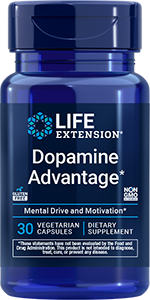
How to Increase Oxytocin
Published: March 2022 | Updated: March 2024
You might think you're feeling "love" when you snuggle up to that special someone for a much-anticipated kiss, or stroke the silky fur of a fluffy puppy. And indeed, you're not wrong. From a biological perspective, however, what you're experiencing is oxytocin, otherwise known as the "love hormone" or "cuddle hormone."
Oxytocin helps to build feelings of trust and empathy, as well as affection and attachment. Those feelings certainly help when you're building positive relationships or are just looking to maintain an already-established love connection.
That's pretty good stuff—so how can you get more oxytocin in your life? Here are natural ways to summon the love hormone.
What is oxytocin?

Oxytocin is a hormone and neuropeptide produced in your hypothalamus and stored in your pituitary gland, a gland in the brain that regulates your hormone system, among other essential bodily functions. It's produced during pregnancy and childbirth and breastfeeding; that well-known bond between mother and child is largely due to this hormone. And, oxytocin is behind that famous "afterglow" of sexual activity. It's nicknamed the "cuddle" or "love" hormone because levels increase in the brain during physical contact like hugging and sexual arousal.
Levels of this hormone also go up in happy social bonding situations, like hanging out with friends and family game nights. It can also help you relax and enjoy the moment.
Like serotonin, oxytocin is one of a suite of "happy hormones"—along with neurotransmitters (chemical messengers) like dopamine and endorphins—that signal joy, contentment, euphoria and exhilaration in your brain.
Is oxytocin good for you?
Of course, it is! Not only does oxytocin make you feel good about yourself and the person you are with, but it can also help you feel calmer and better able to manage stress. It's certainly no coincidence that you get a flood of oxytocin after childbirth and while breastfeeding—as any new mom can tell you, these experiences can be pretty difficult, and that love hormone certainly helps with recovery and sleepless nights!
But a word to the wise: your oxytocin system isn't a cure-all. It won't make you fall in love or even feel good about another person if positive feelings don't already exist.
14 natural ways to increase oxytocin

Want to increase your levels of the love hormone? Good news—there are many natural ways to feel more of those warm and fuzzies!
1. Build positive relationships
When oxytocin is released from the pituitary gland, it helps us feel empathy and trust. Experiencing positive relationships with others can help increase this chemical messenger. Bonding behaviors as simple as talking on the phone with a friend, grabbing a cup of coffee with a coworker, or singing with your kids in the car all can increase your love hormone.
2. Cultivate a "zen" mind state
Your stress response is a biological process that keeps you alert and alive. Unmanaged stress causes cortisol to increase and can inhibit the secretion of oxytocin. That means managing your stress is key to encouraging your love hormone's release. On the plus side, this neuropeptide can help you feel more relaxed. So, grab every opportunity to pet your pooch, give a friend a hug or hold hands with your honey!
3. Make time for physical contact
Boost your cuddle hormone levels with skin-to-skin contact, such as holding hands, hugging, and cuddling. Physical touch not only promotes oxytocin release but also encourages cardiovascular and immune system health. That's why it's so important for new mothers and their babies to experience skin-to-skin contact immediately after childbirth.
4. Help others
Doing something nice for someone else may boost oxytocin, according to studies. This "pay it forward" behavior taps into rewarding feelings of compassion and empathy. Plus, it makes the world around us a more caring place.
5. Move to the music
This is sure to be music to your ears: Studies show that music—hearing it or making it—can help increase oxytocin levels in the brain. You may have discovered this link already by putting on some music to help reduce those distracting thoughts and make falling asleep easier. Choosing "our song" is also a popular form of bonding between couples, classmates and friends. So put on your favorite station and enjoy the benefits!
6. Move your body
Exercise such as running has been found to lead to a rapid increase in salivary oxytocin, according to a study. Plus, engaging in activity is important for your other hormone levels, as well. And the other physical and mental health benefits of exercise are unequivocal. So, even if you're not feeling like going to the gym, you'll likely feel better if you do! And there's no need to go into "beast mode" to get the many benefits of exercise. Just 30 minutes a day, at least five days a week, is all it takes!
Pro tip: Mix it up! Target and tone large muscle groups with resistance or weightlifting training at least twice a week.
7. Make it a table for two
You've heard the way to a man's heart is through his stomach. There's a reason for that! (And, we'd argue that women's hearts and stomachs are linked, too!). Sharing a meal (or even a snack) can be both calming and bonding thanks to the oxytocin released in response to the pleasures of both eating and being in someone else's company. What's more, because oxytocin helps regulate energy expenditure and decreases hunger, it can help shape healthy eating behavior and metabolism.
Considering a dinner reservation? Make the call! A second happy hormone, dopamine, can kick in from the actual process of eating food, giving you twice the benefits from a single meal.
Explore Our Best Brain Health Supplements
8. Try acupuncture
This ancient healing practice of traditional Chinese medicine—in which thin needles are placed at specific points in the body—may also boost this chemical messenger. A study showed that acupuncture may stimulate an oxytocin release in the brain. With more of this happy neurotransmitter engaged, you may find yourself more drawn to social interaction, better attuned to social cues and interested in establishing relationships.
9. Add meditation to your routine
This is another activity that checks the 3-for-1 box of managing stress to support mental health and increase oxytocin. Meditation helps reduce cortisol levels and allows you to focus on your mind-body connection, helping you balance out your neuronal activity. Researchers found that meditation, especially when it focuses on feelings of altruism and appreciation, led to an increase in salivary oxytocin levels. Meditation also has been shown to promote emotional health, attention and self-awareness.
10. Snuggle with your dog
You don't need a reason to rub your dog's belly when he asks for it, but here's one, anyway: Studies show both humans and their pets benefit from a surge in oxytocin from giving and receiving strokes, rubs and cuddles.
11. Get on your yoga mat
Strike a tree pose and breathe deep! Not only can yoga help you manage stress (see #5) and maintain healthy cortisol levels, but it also helps to stimulate oxytocin release, according to researchers. A study found that yoga therapy resulted in an increase in oxytocin plasma levels when compared with a control group. That translates into more oxytocin in the brain, more warm and fuzzy feelings and a sense of connection with loved ones (or at least, the other people in your yoga class).
12. Oh…baby!
Oxytocin plays a role in one of the natural results of sexual activity: childbirth. It's released during a woman's labor and works with melatonin receptors to help stimulate the uterine contractions that open the cervix and push the baby through the birth canal. That makes this brain chemical vital for the birthing process, and it's the start of that beautiful connection mothers share with their children. (Of course, this doesn't mean everyone should have babies just to release oxytocin…but it's definitely one of the perks!)
13. Orgasms: highly recommended!
The "big O" doesn't usually stand for oxytocin, but maybe it should. Studies show a boost of oxytocin during orgasm and ejaculation, which could explain the warm afterglow and urge to cuddle that often follows.
14. Breastfeeding: It's bonding time
During breastfeeding, oxytocin triggers the milk let-down reflex that starts the flow of milk from mom to baby. It also fosters mom-baby affection and bonding, which helps to make breastfeeding a more comfortable and comforting experience for both mother and child.
Does chocolate increase oxytocin?
What doesn't chocolate do? The good news is that chocolate helps increase feel-good hormones, including serotonin and dopamine, and yes, oxytocin. So, the science is squarely behind the idea that a square of chocolate does your mind (and body) good! Chocolate also contains magnesium, which is good for your oxytocin receptors. Enjoy responsibly!
Is there an oxytocin supplement?
Technically, no: you can't take a supplement to achieve the affection and connection that this chemical messenger brings. But you can help support your levels through food intake and proper nutrition.
And there are several vitamins and minerals that play a role in the production and synthesis of this chemical messenger, so supplementing may help you maintain healthy oxytocin levels.
What vitamins boost oxytocin levels?

There are several nutrients you can add to your food intake which may prompt the release of more of your cuddle hormone. Here are three to you get started:
Vitamin D.
The sunshine vitamin may make you more prone to a "sunny" disposition because it supports oxytocin synthesis and may even stimulate their production. A vitamin D supplement can help keep your levels in top shape.Magnesium.
According to researchers, the presence of magnesium can help "sensitize" oxytocin receptors in the brain. So making sure you have healthy levels of this mineral is a good idea. We recommend magnesium L-threonate, a form that is readily absorbed by the brain.Vitamin C.
Vitamin C plays a role in the function of an enzyme involved in oxytocin production, so it is also a good supplement for its support. Some forms of vitamin C, such as liposomal vitamin C, provide around-the-clock delivery so you'll always have this antioxidant in your system.
Is oxytocin in any foods?
Although you won't find the love hormone in any foods, you can make sure you are getting the nutrients you need to support healthy oxytocin levels. Nutrient-dense foods are the basis of any healthy diet, so throw out that junk food, and reduce your sugar intake. Making sure you have good sources of magnesium, vitamin C and vitamin D in your food intake can support an oxytocin-rich lifestyle.
Plus, the social interaction with others while enjoying your food intake also triggers your brain to release more of the love hormone–it's a win-win!
References
- Borland, Johnathan M, et al. "Role of oxytocin in the ventral tegmental area in social reinforcement." Psychoneuroendocrinology. September 2018. https://pubmed.ncbi.nlm.nih.gov/29852406/
- Cera, Nicoletta, et al. "How Relevant is the Systemic Oxytocin Concentration for Human Sexual Behavior? A Systematic Review." Sex Med. August 2021. https://pubmed.ncbi.nlm.nih.gov/34118520/
- de Jong, Trynke R, et al. "Salivary oxytocin concentrations in response to running, sexual self-stimulation, breastfeeding and the TSST: The Regensburg Oxytocin Challenge (ROC) study." Psychoneuroendocrinology. December 2015. https://pubmed.ncbi.nlm.nih.gov/26385109/
- Doseděl, Martin, et al. "Vitamin C-Sources, Physiological Role, Kinetics, Deficiency, Use, Toxicity, and Determination." Nutrients. February 13, 2021. https://pubmed.ncbi.nlm.nih.gov/33668681/
- Harvey, Alan R. "Links Between the Neurobiology of Oxytocin and Human Musicality." Front Hum Neurosci. August 26, 2020. https://www.ncbi.nlm.nih.gov/labs/pmc/articles/PMC7479205/
- Hurlemann, René, et al. "Deciphering the modulatory role of oxytocin in human altruism." Rev Neurosci. May 2017. https://pubmed.ncbi.nlm.nih.gov/28301323/
- Jayaram, N., et al. "Effect of yoga therapy on plasma oxytocin and facial emotion recognition deficits in patients of schizophrenia." Indian journal of psychiatry. July 2013. https://www.ncbi.nlm.nih.gov/labs/pmc/articles/PMC3768223/
- Jirikowski, Gustav F, et al. "Oxytocin and Steroid Actions." Curr Top Behav Neurosci. 2018. https://pubmed.ncbi.nlm.nih.gov/28812264/
- Kerem, Liya, et al. " The Effects of Oxytocin on Appetite Regulation, Food Intake and Metabolism in Humans." Int J Mol Sci. July 2021. https://www.ncbi.nlm.nih.gov/labs/pmc/articles/PMC8306733/
- Li, Qin, et al. "Foot massage evokes oxytocin release and activation of orbitofrontal cortex and superior temporal sulcus." Psychoneuroendocrinology. March 2019. https://pubmed.ncbi.nlm.nih.gov/30469087/
- Machida, S., et al. "Oxytocin Release during the Meditation of Altruism and Appreciation (Arigato-Zen)." International Journal of Neurology Research. 2018. http://www.ghrnet.org/index.php/ijnr/article/view/2209/2682
- Marshall-Pescini, Sarah, et al. "The Role of Oxytocin in the Dog–Owner Relationship." Animals (Basel). October 2019. https://www.ncbi.nlm.nih.gov/labs/pmc/articles/PMC6826447/
- Osilla, Eva V, et al. "Oxytocin." StatPearls. July 2021. https://www.ncbi.nlm.nih.gov/books/NBK507848/
- Stephens, Ina. "Medical Yoga Therapy." Children. February 2017. https://doi.org/10.3390/children4020012
- Su, Tangfeng, et al. "Acupuncture and oxytocinergic system: The promising treatment for autism." Transl Neurosci. January 2021. https://www.ncbi.nlm.nih.gov/labs/pmc/articles/PMC7896431/
- Tomosugi, Naohisa, et al. "Gentle, Massage-like, Head Stroking Provokes Salivary Oxytocin Release." Altern Ther Health Med. September 2021. https://pubmed.ncbi.nlm.nih.gov/34559691/
- UvnäsMoberg, Kerstin, et al. "Maternal plasma levels of oxytocin during breastfeeding—A systematic review." Plos One. August 5, 2020. https://doi.org/10.1371/journal.pone.0235806
- Uvnäs-Moberg, Kerstin, et al. "Self-soothing behaviors with particular reference to oxytocin release induced by non-noxious sensory stimulation." Front. Psychol. January 2015. https://www.frontiersin.org/articles/10.3389/fpsyg.2014.01529/full
- Waltenspühl, Yann, et al. "Crystal structure of the human oxytocin receptor." Sci Adv. July 15, 2020. https://pubmed.ncbi.nlm.nih.gov/32832646/
- Walter, Michael H., e.al. "The Role of Oxytocin and the Effect of Stress During Childbirth: Neurobiological Basics and Implications for Mother and Child." Front. Endocrinol., October 2021. https://doi.org/10.3389/fendo.2021.742236
- Yüksel, Oğuz, et al. "Regular Aerobic Voluntary Exercise Increased Oxytocin in Female Mice: The Cause of Decreased Anxiety and Increased Empathy-Like Behaviors." Balkan Med J. September 2019. https://www.ncbi.nlm.nih.gov/labs/pmc/articles/PMC6711252/
Always be in the know!
Access the latest deals, wellness news, expert health tips & more!






